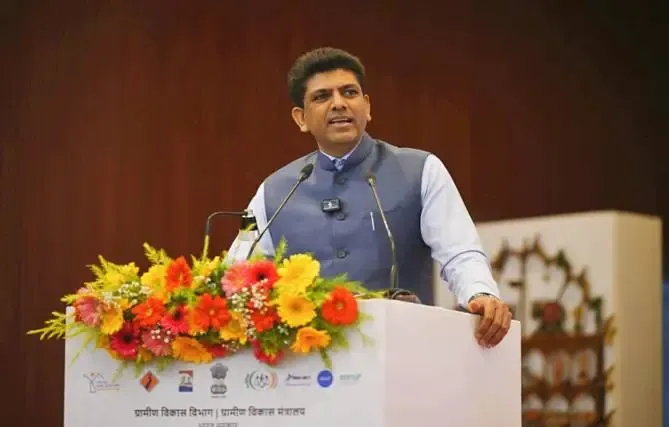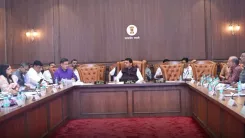How Can We Build a ‘Viksit Gaon’ to Achieve a ‘Viksit Bharat’?

Synopsis
Key Takeaways
- ‘Viksit Gaon’ concept focuses on sustainable rural development.
- Significant investment in MGNREGS aids in job creation.
- Over 3.22 crore pucca houses built under PMAY-G.
- Need for eco-friendly construction technologies.
- Community involvement is crucial for project success.
New Delhi, July 14 (NationPress) - The Union Minister of State for Rural Development, Pemmasani Chandrasekhar, emphasized the importance of constructing a ‘Viksit Gaon’ to realize a ‘Viksit Bharat’ by the year 2047.
During the inaugural meeting of the Performance Review Committee of the Rural Development Ministry in New Delhi, the Minister stated, “A ‘Viksit Gaon’ where each household has a pucca house equipped with essential amenities, where villages are linked by quality roads, every rural youth is provided with job opportunities, and every woman is empowered and financially self-sufficient is not merely a vision but an attainable goal.”
“Achieving this goal necessitates renewed vigor, innovative ideas, and a profound commitment,” he added.
Highlighting the Rural Development Ministry's pivotal role in this journey, MoS Chandrasekhar mentioned that they are not merely executing schemes but actively shaping the next chapter of India’s growth narrative.
“Thanks to the visionary guidance of Prime Minister Narendra Modi and Cabinet Minister Shivraj Singh Chouhan, we have made significant strides in rural development,” he remarked.
Referring to the Mahatma Gandhi National Rural Employment Guarantee Scheme (MGNREGS), he described it as a vital tool against distress migration, particularly during agricultural off-seasons, stating, “With an annual investment of Rs 90,000 to Rs 1,00,000 crore, it has facilitated the creation of sustainable and productive assets.”
With over 250 crore person-days generated each year, more than 36 crore job cards issued, and over 15 crore workers benefiting from this scheme, the impact is substantial.
The Minister proposed a shift from mere wage payments to creating meaningful assets, encouraging diversified work, convergence with other development initiatives, and community involvement in work selection.
On the Pradhan Mantri Awaas Yojana – Gramin (PMAY-G), he noted that since its inception, over 3.22 crore pucca houses have been constructed for rural households.
A target has been established to build an additional 2 crore houses by 2029 to accommodate the growing demand from family expansion and rural population increases.
The Minister also advocated for the use of eco-friendly and region-specific construction technologies along with cost-effective housing designs for rural homes.





